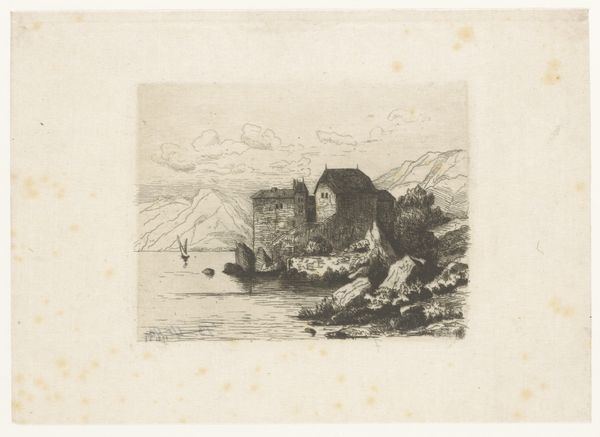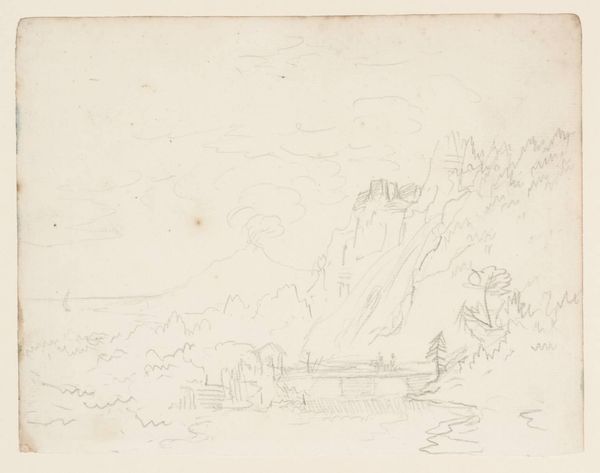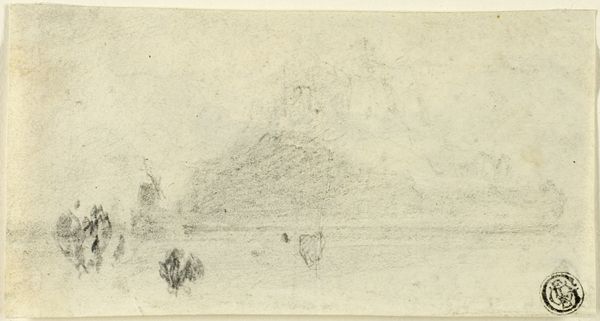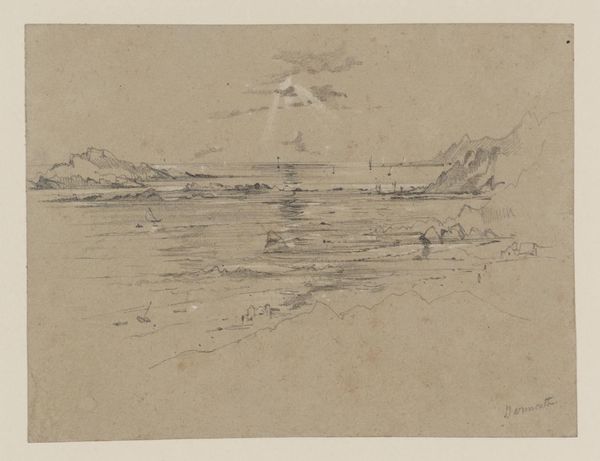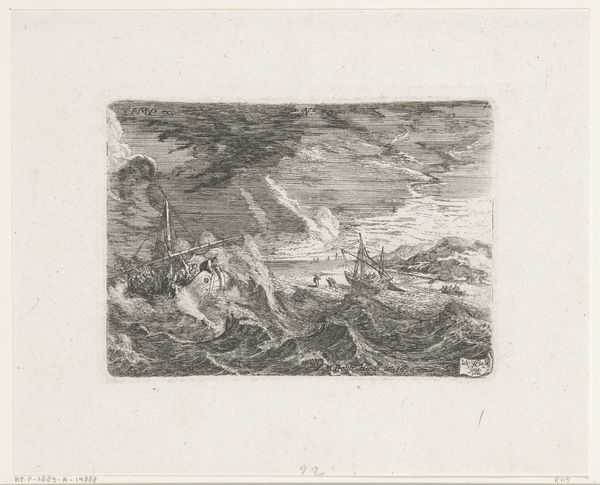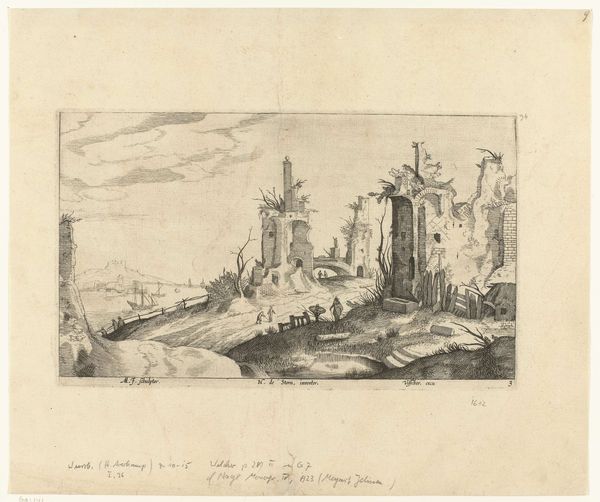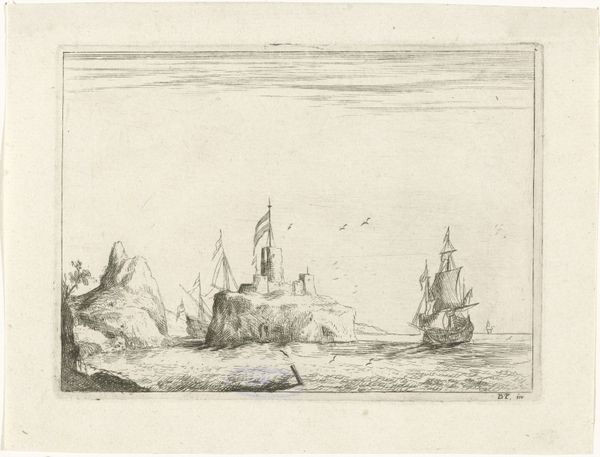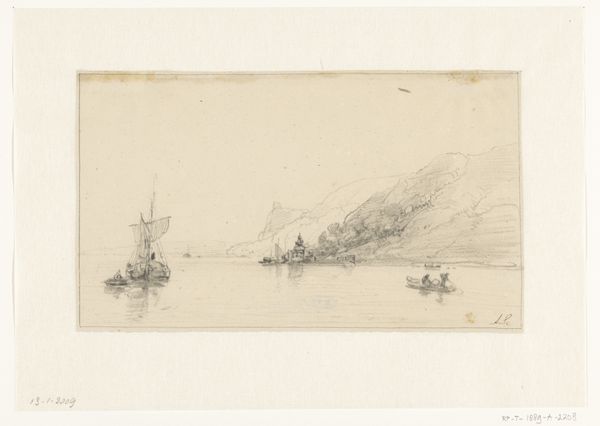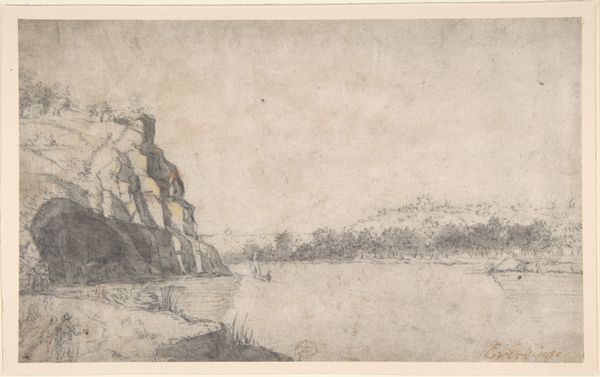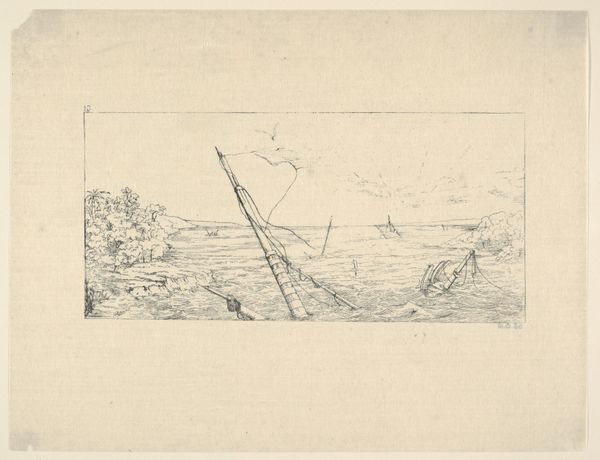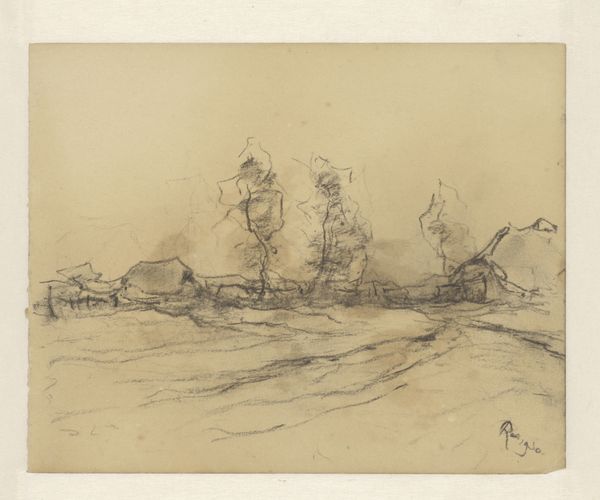
etching
#
etching
#
landscape
#
etching
#
romanticism
#
realism
Dimensions: height 120 mm, width 185 mm
Copyright: Rijks Museum: Open Domain
Editor: This etching, titled "Zeilsloep met gebroken mast voor de kust van Noorwegen" (Sailboat with Broken Mast off the Coast of Norway), created by Egidius Linnig in 1842 and housed in the Rijksmuseum, evokes a palpable sense of danger and the powerlessness of humanity against nature's forces. I am curious, how would you approach interpreting this piece? Curator: Given my focus, I’d say look at the materials. Etching, specifically. Think about what that implies. What would the process be of making such an image with those materials in 1842? It requires significant skill, and access to certain tools and supplies. The paper, the ink, the press… these aren't neutral elements. Consider the social context – who was commissioning or purchasing prints like these and what message does that communication through purchased materials say? Editor: So you're focusing on the socioeconomic aspect and what the materiality suggests about the creation and consumption of art in that time. Does that tell us something about the message communicated or who had the power to dictate art? Curator: Precisely! The romantic ideal of nature’s sublime power, as visually communicated in this etching through specific modes of production and making – including the manual labor involved in the etching process – gets reproduced and consumed, it also naturalizes a certain class structure, a certain means of communicating a political hierarchy that extends to the social realities outside the artwork, it gets embedded in the market! I want us to consider this artistic practice as being less about an individual genius, and much more about the forces shaping society. Editor: I never considered the print itself as a kind of material commodity, shaped by the labour of its production! That's a completely fresh perspective for me. Curator: Hopefully, by examining its creation and circulation, we have a wider vision that makes you think differently about the means of art production.
Comments
No comments
Be the first to comment and join the conversation on the ultimate creative platform.
